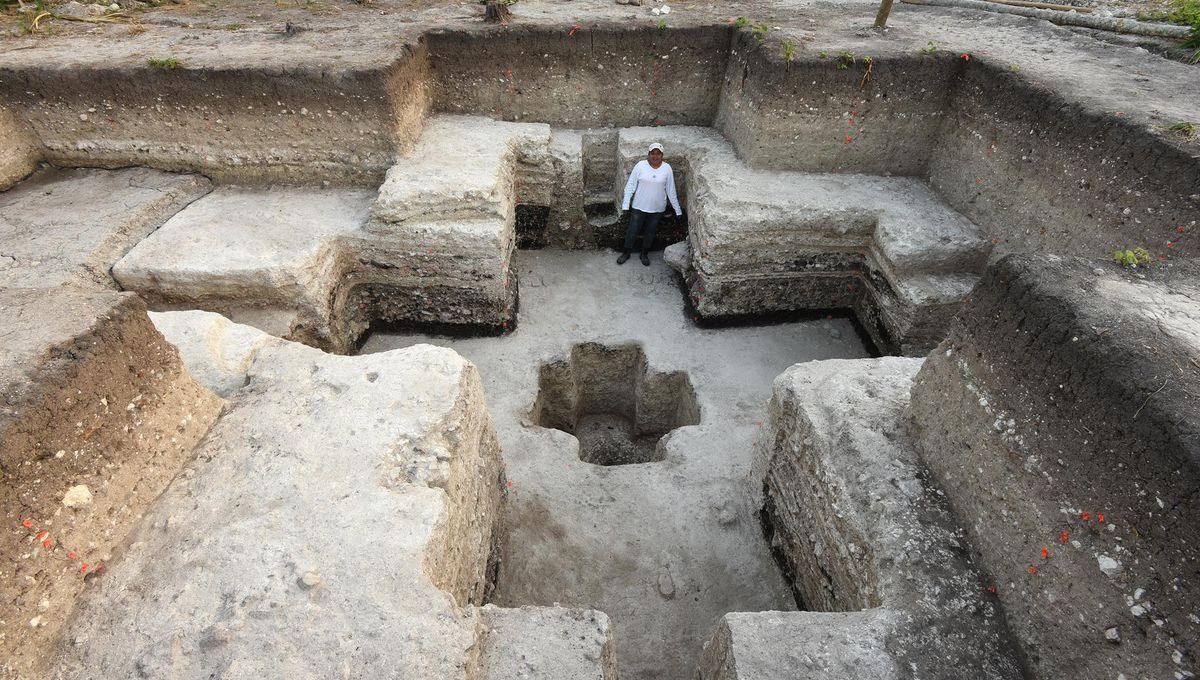-
Feed de Notícias
- EXPLORAR
-
Páginas
-
Blogs
-
Fóruns
Largest Structure In The Maya Realm Is A 3,000-Year-Old Map Of The Cosmos – And Was Built By Volunteers

Largest Structure In The Maya Realm Is A 3,000-Year-Old Map Of The Cosmos – And Was Built By Volunteers
A colossal structure in southern Mexico that dwarfs every other building in the Maya world was probably built without the use of forced labor, centuries before the emergence of the empire’s structured hierarchy or elite rulers, according to a new study. Known as Aguada Fénix, the colossal project was most likely conceived as a model of the cosmos, and spans an incredible 9 by 7.5 kilometers (5.6 by 4.7 miles).
The rest of this article is behind a paywall. Please sign in or subscribe to access the full content. Previous work using laser mapping had revealed the presence of a massive central platform measuring 1,400 by 400 meters (4,600 by 1,300 feet), which was dated to between 1050 and 700 BCE. “This makes it the oldest and also biggest building in the entire Maya history,” study author Takeshi Inomata tells IFLScience. Returning to the site to conduct more excavations between 2020 and 2024, Inomata and his colleagues revealed that Aguada Fénix extends for several miles beyond this mega platform. Enormous canals, 35 meters (115 feet) wide and 5 meters (16 feet) deep, were identified running from north to south and east to west, along with an enormous dam to supply them with lake water. The overall size of the structure therefore rivals or exceeds that of the most powerful cities in ancient Mesoamerica, most of which were constructed centuries or even millennia after Aguada Fénix. As for the function of the site, Inomata says that “it doesn't have any practical use other than for ceremonies,” leading the researchers to suggest that the layout must have been designed to mirror the shape of the universe, with its main alignments following the cardinal points. This assertion is supported by the discovery of a central cross-shaped cache, with each side colored using a different pigment. “Inside the pit we found blue pigment to the north, green to east and yellow to the south,” explains Inomata. “We know that for later Maya people, each direction has its own specific color,” he says, adding that this is the earliest known use of directional color symbols in Mesoamerica. Different pigments were used to represent the different directions. Image credit: Takeshi Inomata However, because the Maya social hierarchy – consisting of royal elites served by forced laborers – didn’t emerge until 350 BCE, it seems likely that Aguada Fénix was built in the absence of any institutionalized inequality. “Usually, if you have kings or rulers, they are represented in sculptures or paintings, or they live in big palaces,” says Inomata. “We don't have any of those at Aguada Fénix.” Instead, the researchers found greenstone sculptures of a crocodile, a bird, and a woman giving birth – all of which represent the everyday experience of regular people. According to Inomata, the most plausible scenario is therefore that “people came voluntarily, willingly, because this idea of building a representation of the universe was appealing to many people.” Despite this apparent lack of rulers, however, the study authors suspect that the construction of the site may have been overseen by certain prominent individuals whose astronomical knowledge afforded them influence over others. “The large cosmogram was probably designed by these leading figures, who had specialized skills and knowledge of astronomical observations and calendrical calculations,” write the study authors. “[These individuals] probably did not have coercive power, but their esoteric knowledge may have earned them respect, enabling them to persuade large numbers of people to participate in constructions and rituals,” conclude the researchers. The study is published in the journal Science Advances. Photo by Inomata.jpg)


